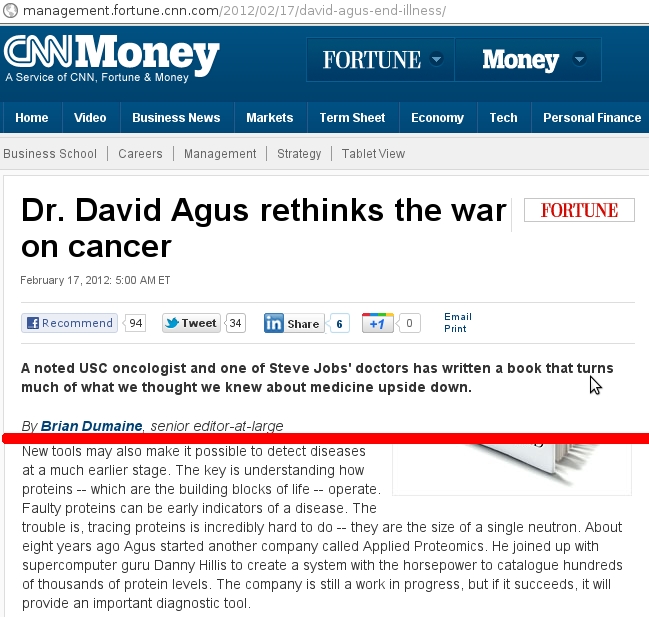On February 17th, CNN published an online article about cancer treatment and argued towards prophylactically attacking cancer before the state or process of cancer arises. It originally contained an error.

Article containing an error from CNN. Red line indicates a cut in the text to focus on the incorrect passage. (Screencapture for educational and scholarly discussion, thus qualifies as Fair Use)
A neutron is a sub-atomic particle. Sub-atomic indicates that it is smaller than an atom. We know that atoms build molecules and proteins are biologically important macromolecular polymers. We know that a proton is a sub-atomic particle that has an approximate mass of a neutron. From the context of the article, this is not where the error lies –proton in place of protein.
Some time after the article was published online, there was an edit to rectify the error:
New tools may also make it possible to detect diseases at a much earlier stage. The key is understanding how proteins — which are the building blocks of life — operate. Faulty proteins can be early indicators of a disease. The trouble is, tracing proteins is incredibly hard to do — they have to be examined at the level of a single neutron. About eight years ago Agus started another company called Applied Proteomics. He joined up with supercomputer guru Danny Hillis to create a system with the horsepower to catalogue hundreds of thousands of protein levels. The company is still a work in progress, but if it succeeds, it will provide an important diagnostic tool.
The passage now reads that proteins must be studied at the level of a single neutron. If a protein is a macromolecule and a neutron is a sub-atomic particle:
- What could that possibly mean to trace proteins at the level of the neutrons?
The passage then states that Applied Proteomics is cataloging hundreds of thousands of protein levels (in magenta). As a lay scientist:
- What are your interpretations of this last statement?
- How would you interpret the work of Applied Proteomics from this article?
- How would you interpret the work of Applied Proteomics from from their website?
As a scientist, I would remark that this statement is gibberish, especially in the context of the rest of the article. Often times, we come across improperly written statements. We understand that science is very technical, but understanding some basic concepts, we can identify the faults in improper statements. We can further attempt to clarify improper statements by seeking out additional information. Here, since the statements are so befuddling, we can then turn to the primary source of information –Applied Proteomics.



